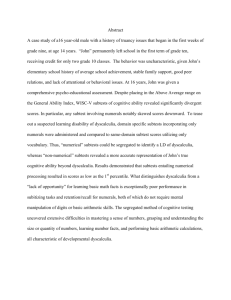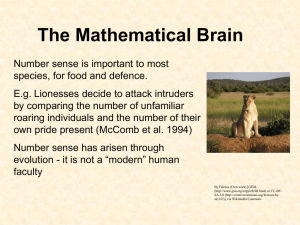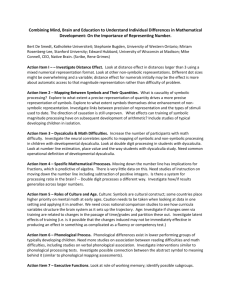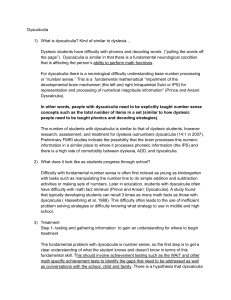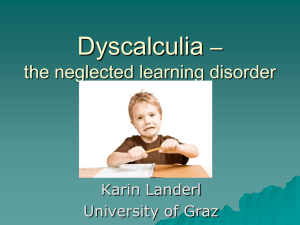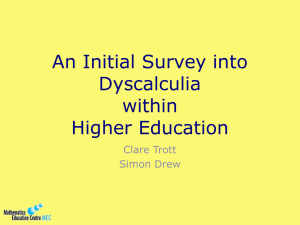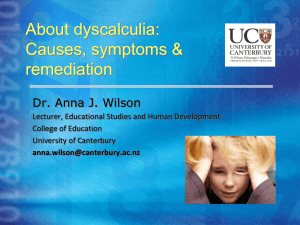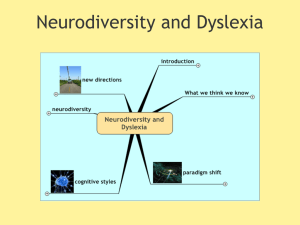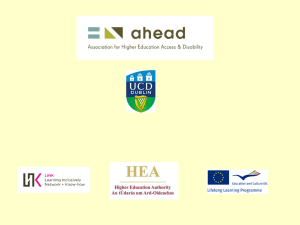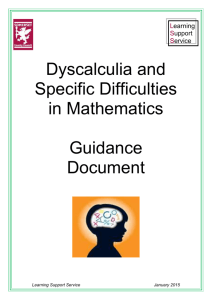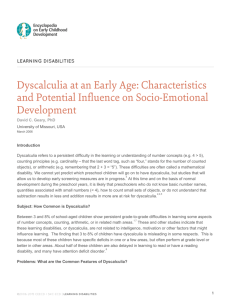Dyscalculia
advertisement
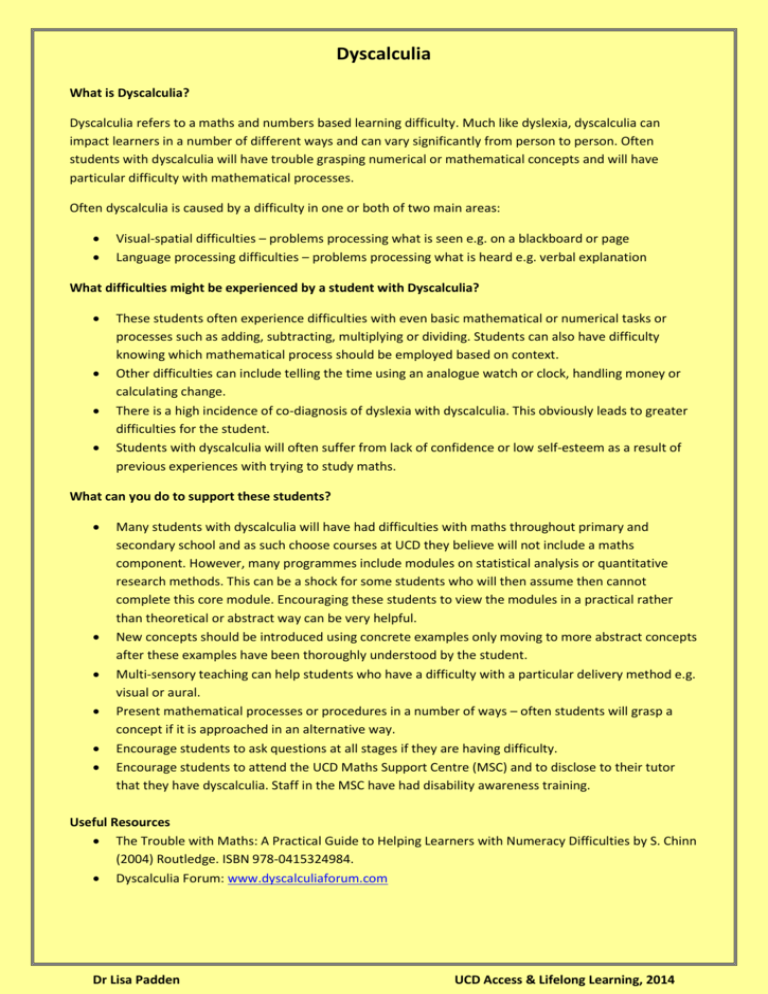
Dyscalculia What is Dyscalculia? Dyscalculia refers to a maths and numbers based learning difficulty. Much like dyslexia, dyscalculia can impact learners in a number of different ways and can vary significantly from person to person. Often students with dyscalculia will have trouble grasping numerical or mathematical concepts and will have particular difficulty with mathematical processes. Often dyscalculia is caused by a difficulty in one or both of two main areas: Visual-spatial difficulties – problems processing what is seen e.g. on a blackboard or page Language processing difficulties – problems processing what is heard e.g. verbal explanation What difficulties might be experienced by a student with Dyscalculia? These students often experience difficulties with even basic mathematical or numerical tasks or processes such as adding, subtracting, multiplying or dividing. Students can also have difficulty knowing which mathematical process should be employed based on context. Other difficulties can include telling the time using an analogue watch or clock, handling money or calculating change. There is a high incidence of co-diagnosis of dyslexia with dyscalculia. This obviously leads to greater difficulties for the student. Students with dyscalculia will often suffer from lack of confidence or low self-esteem as a result of previous experiences with trying to study maths. What can you do to support these students? Many students with dyscalculia will have had difficulties with maths throughout primary and secondary school and as such choose courses at UCD they believe will not include a maths component. However, many programmes include modules on statistical analysis or quantitative research methods. This can be a shock for some students who will then assume then cannot complete this core module. Encouraging these students to view the modules in a practical rather than theoretical or abstract way can be very helpful. New concepts should be introduced using concrete examples only moving to more abstract concepts after these examples have been thoroughly understood by the student. Multi-sensory teaching can help students who have a difficulty with a particular delivery method e.g. visual or aural. Present mathematical processes or procedures in a number of ways – often students will grasp a concept if it is approached in an alternative way. Encourage students to ask questions at all stages if they are having difficulty. Encourage students to attend the UCD Maths Support Centre (MSC) and to disclose to their tutor that they have dyscalculia. Staff in the MSC have had disability awareness training. Useful Resources The Trouble with Maths: A Practical Guide to Helping Learners with Numeracy Difficulties by S. Chinn (2004) Routledge. ISBN 978-0415324984. Dyscalculia Forum: www.dyscalculiaforum.com Dr Lisa Padden UCD Access & Lifelong Learning, 2014
